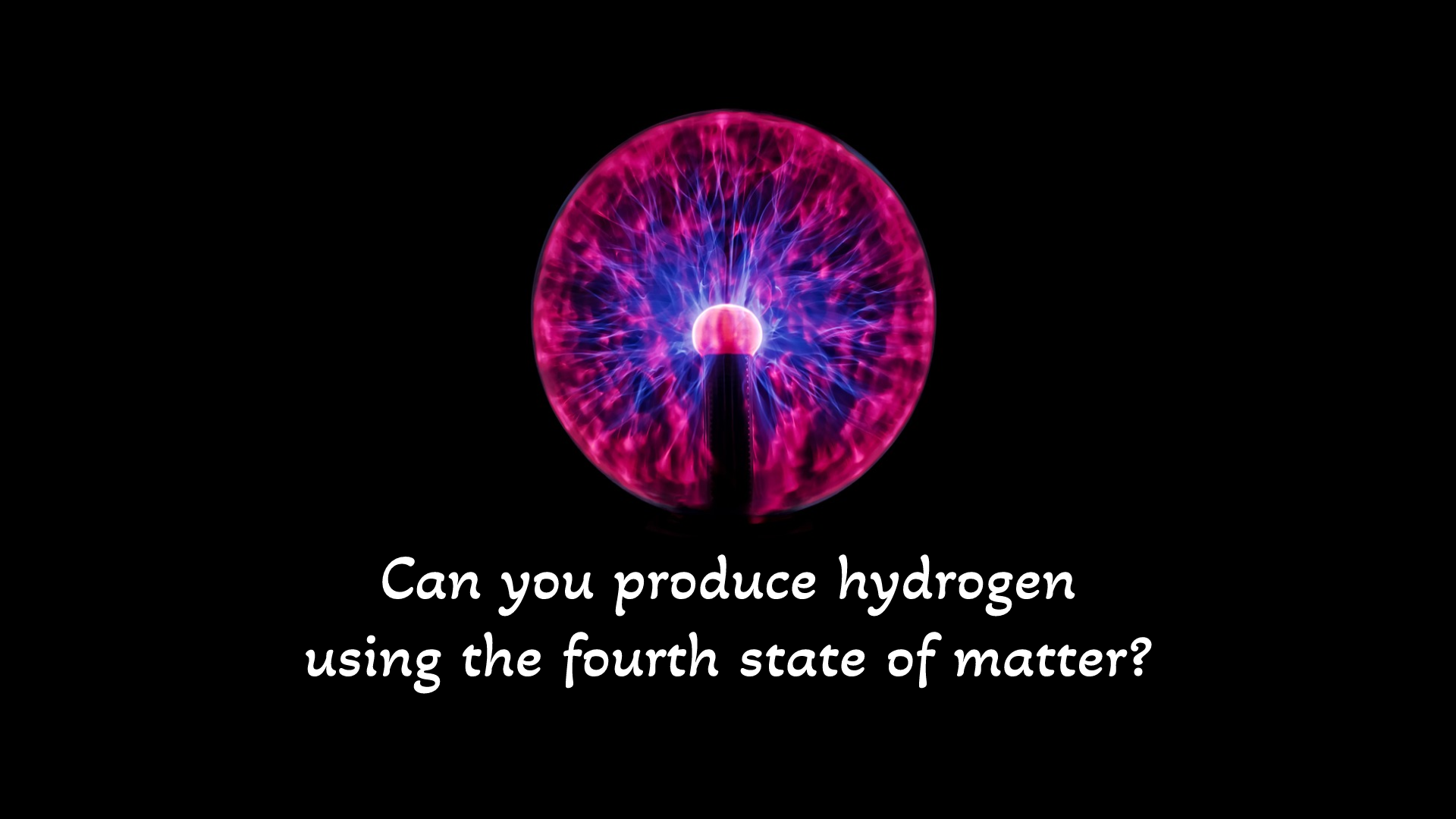Plasmalysis

Plasmalysis or plasma electrolysis simply refers to the production of hydrogen using plasma. During plasmalysis the plasma produced in the plasmalyser breaks the strong bond between hydrogen and its compounds thereby releasing hydrogen. In this way, hydrogen can be easily produced with less energy consumption compared to the splitting of water via electrolysis. This method of hydrogen production is discussed in detail below.
What is plasma?
Before getting to know plasmalysis in detail, it is important to know what plasma is, How can plasma be created and its characteristics. Plasma simply refers to a completely or partially ionized gas i.e. when strong energy with several thousand kilovolts is supplied to gases like Air, Argon, or Helium, it results in the ionization of these gases producing plasma. Plasma is further characterized based on its temperature, radiation, and electric fields and is naturally seen during lightning in thunderstorms, northern lights, and outer space. Plasma is also considered the fourth state of matter after solid, liquid, and gas and is the dominant state across the universe. Plasma produced artificially is used in plasma screen monitors, fluorescent tubes, neon lamps, etc. Plasma is most commonly used in industries to generate ozone for water purification, produce electrostatic precipitation in the treatment of exhaust emissions, preservation of food, and production of hydrogen. Though the generation of plasma is the same they are classified mainly into two types:
1. Thermal or hot plasmas.
2. Non-Thermal or cold plasmas.
Thermal plasmas have a high-temperature range of around several thousand °C and are used in applications that require high temperature whereas non-thermal plasmas are close to ambient temperature and are suitable for the treatment of sensitive materials.
Production of hydrogen using plasmalysis
Plasmalysis can be used to store energy in the form of hydrogen. The materials that can be plasmalysed and the by-products after plasmalysis of these materials are given below.
Methane -—> H2, Carbon black, Acetylene (Carbon neutral).
Wastewater -—> H2, O2, CO2, N2 (Carbon Emission).
Biomass -—> H2, CO (Carbon Emission).
Ammonia -—> H2, N2 (No harmful emission).
Plastic waste -—> H2, Carbon Black (Carbon neutral).
Plasmalysis of wastewater and methane are the most common and well-developed forms of plasmalysis due to their high hydrogen yield and their emission-free operation. Wastewater from industries and biogas plants have higher concentrations of hydrogen and nitrogen bound together in the form of ammonium hydroxide or ammonia, which can be separated to produce hydrogen and nitrogen using plasmalysis and also consume less energy compared to water electrolysis as shown below:
Dirty water plasmolysis:
2NH3 -—> N2 + 3H2 ∆H = -92 kJ/mol
NH3 -—> 1/2 N2 + 3/2 H2 ∆H = -46 kJ/mol
Energy consumption: 20 kWh/kg H2
Water electrolysis:
2H2O -—> O2 + 2H2 ∆H = -286 kJ/mol
Energy consumption: 45 kWh/kg H2
Similarly methane can be split economically and in an emission-free manner using plasmalysis. 4kg of methane through plasmolysis generates 3kg of carbon and 1kg of hydrogen. This method can also replace methane steam reforming in the future as plasma splitting of methane requires very less energy and no carbon dioxide emission as shown below:
Plasmalysis of methane:
CH4 -—> C + 2H2 ∆H = -75 kJ/mol
Energy consumption: 10 kWh/kg H2
The device in which plasmalysis is performed is called plasmalyzer. The high electric voltage produces plasma which splits hydrogen from its compounds in the absence of air and consumes only 1/5th of the energy needed to generate hydrogen by electrolysis. The hydrogen produced is then collected using a special membrane.
Conclusion and state of the art
From the above, it's clear that you can obviously use the fourth state of matter to produce hydrogen. Now, what's the actual state of the art? Is this technology available commercially? Yes! A German company based in Berlin named Graforce GmbH already uses this technology to manufacture plasmalysers that produce hydrogen from sewage water and biogas.